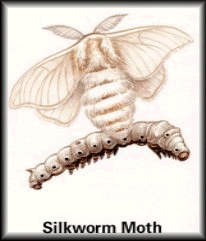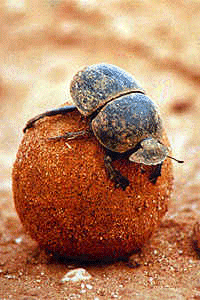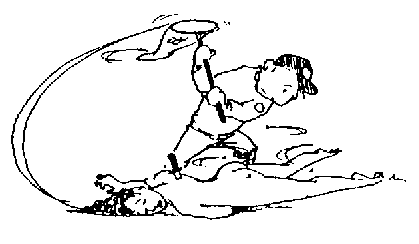Welcome to the world of insects!
Biology 328a is a terrific introductory course to insects.
Why should you take Insect Biology?
![]()
About Dr.Caveney
![]()
![]()
(all instructions provided-see below)![]()
you learn about the amazing insect world!
What is so amazing about the insect world?
Glad you asked...
total number of insects on the planet run up to 10 exp.18 ...
roughly one billion insects for every human being!
Some Points of Interest:

The female of the silkworm moth announces her availability
for mating by giving off a substance called bombykol
which is the ultimate 'perfume'. Male moths can detect
bombykol when it is diluted to one molecule in a quadrillion
in the air!

Dung beetles gather bits of dung and roll them into their burrows.
The females then lay an egg on each ball of dung.
When the eggs hatch into larvae, they feed on the dung until
they are big enough to forage for their own food... yum!
One of the biggest of all is the Goliath Beetle from Africa.
Some grow to 15cm long and they can weigh up to 100g.
(about the same as a fast-food hamburger!)

Insects are also used in cases of untimely death (especially murder!) to
determine the time of death of the victim. It is know that insects inhabit a
decomposing body in a predictable succession.. using this information
forensic entomologists can determine how long insects have been on
the body, and accurately extrapolate the time of death.
That should whet your appetite for the insect world!
 'Need more information about the course?
Here's the nitty-gritty:
'Need more information about the course?
Here's the nitty-gritty:Instructor: Dr. S.Caveney
Antirequisite: The former Biology 226a
Prerequisites: 022, 023 or former 020 or permission of the Department
The course will occupy 2 lecture and 3 lab hours/wk in your
class schedule.
Evaluation:
Insect collecton.....25%
Labs and Tests.......10%
Students are expected to collect and identify local insects to at least
the family level. This collection should be made during the summer and
handed in, properly prepared and labelled, at the end of the course.
Instructions and supplies will be provided. If you are in London for
the summer, pick up the instructions, pins and ethyl acetate from the lab at
B&G rm360 (Mon-Fri 9-5) If you're elsewhere, we will mail you the
instructions and pins (we can't mail ethyl acetate, but we'll include
other easy instructions) Just email me (see below) and give me your
snail mail address.
Still more questions?!
Email me (Kim.. the T.A. for insect bio):
I'd be happy to answer questions pertaining to your collections
throughout the summer as well.
Good Luck and have fun in your courses!
Special Note: if caterpillars and plants interest you, there is a position
for a work-study student during the school year in the greenhouse.
Click here to go back to Undergrad Page